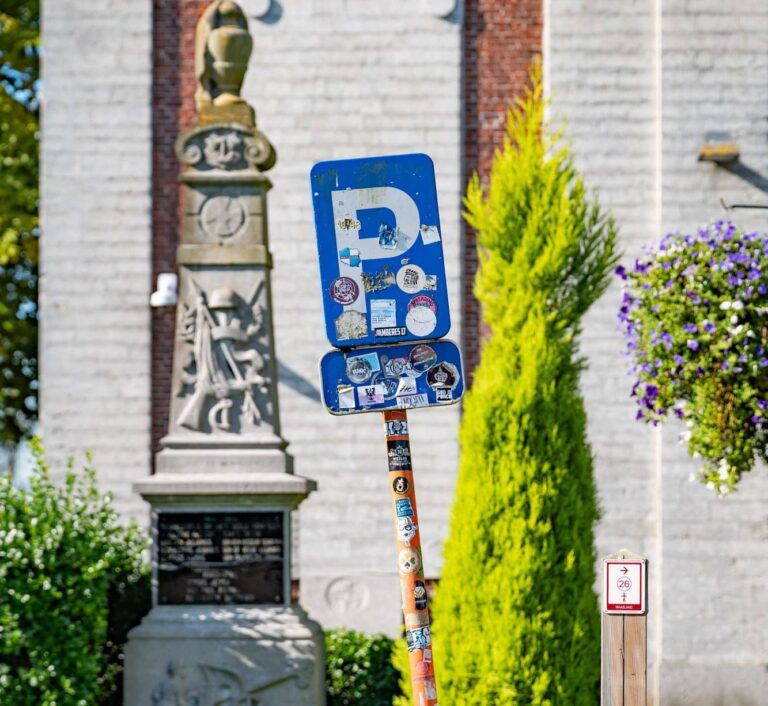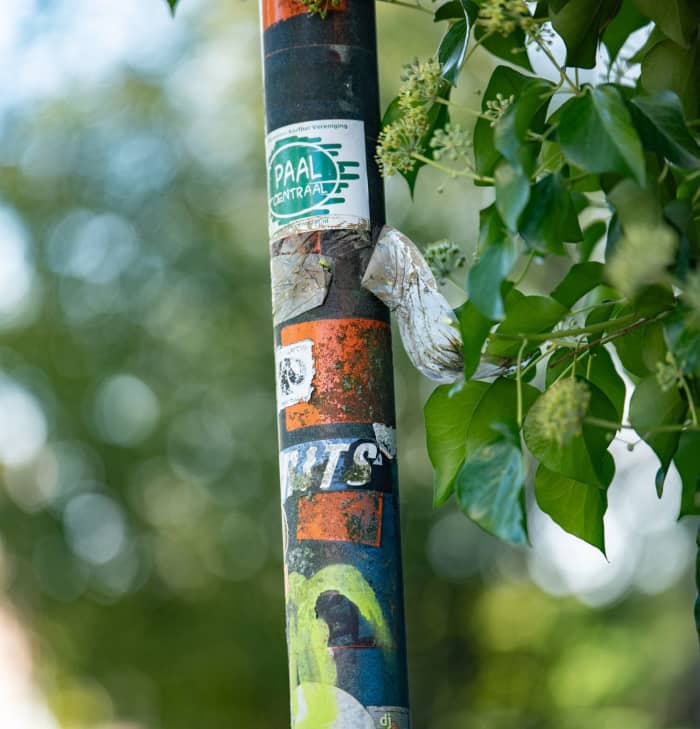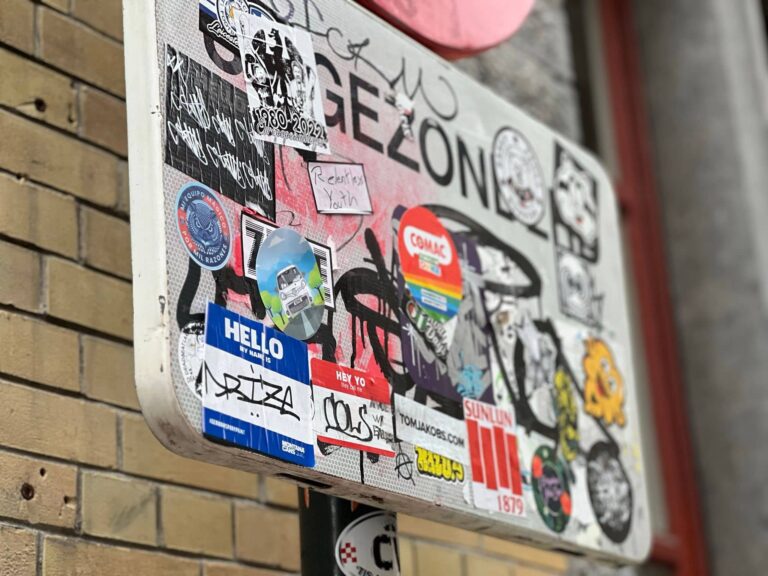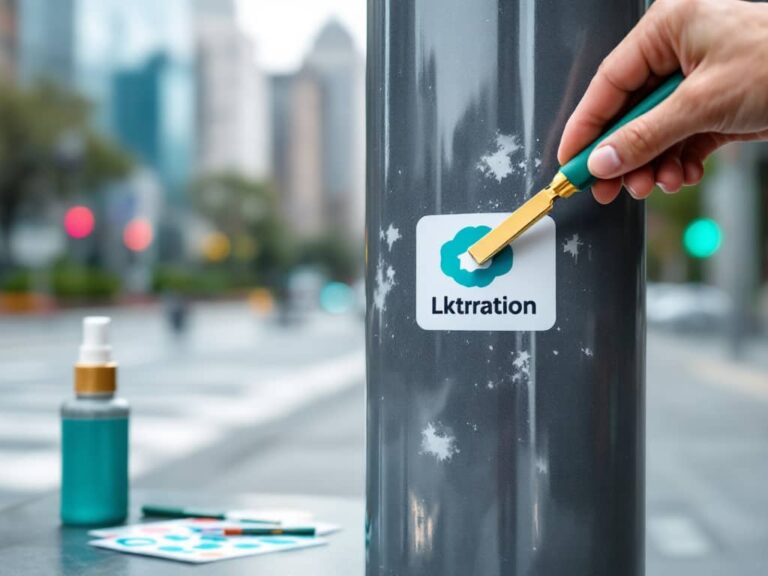Sticker Vandalism:
How to prevent it and how to deal with its consequences
-
Ko van den Boom
- Reading time: 23 minutes
- Stickers, Vandalism

We all know about graffiti, but have you ever stopped to consider its close cousin, sticker vandalism? While a single sticker might seem harmless, the cumulative effect of tens or even hundreds of stickers can pose a real problem for municipalities and infrastructure owners.
In some contexts – like subculture clubs and event venues – stickers and sticker clusters can have a really impressive aesthetic to them and can contribute to the image of spaces, but layers of stickers in undesired places often damage property and contribute to urban blight. This post overviews the problem of sticker vandalism, exploring its impact and, most importantly, how to prevent it and mitigate its aftermath.
Contents
Ko van den Boom
Main Categories
The Sticker Vandalism Problem
What is sticker Vandalism?
It involves the unauthorized placement of stickers on public or private property. It’s about those annoying stickers plastered on street signs, lampposts, utility boxes, and even historic buildings. This isn’t about legitimate uses like promotional stickers or event posters; it’s about deliberate defacement of (mostly) public property. Stickers are often used also as a channel of communication for activist initiatives or even political communication as this Hungarian study shows.
Types of Sticker Vandalism
The Impact of sticker vandalism
Sticker vandalism creates visual clutter, making our cities look messy and uncared for. But it goes beyond aesthetics. Stickers can damage surfaces, especially if they’re forcefully removed. Think about paint chipping or leaving behind a sticky residue. This can lead to costly cleaning and repairs for property owners and local authorities. According to a report by Keep America Beautiful, Graffiti Hurts, vandalism, including sticker vandalism, contributes to a decline in property values and can even increase fear of crime in neighbourhoods.
Surfaces & Locations of sticker vandalism
Vulnerable Surfaces
Smooth surfaces are a sticker vandal’s paradise. Think about street signs, lampposts, traffic signal boxes, public benches, and the sides of buildings. These are all easily accessible and offer maximum visibility for “stickers artists.” Transport for London (TfL) Graffiti identifies public transport as a major target, with stickers frequently appearing on buses, trains, and station infrastructure.
Problematic Areas
Sticker vandalism tends to cluster in areas with high foot traffic, like city centers, shopping districts, and transport hubs. Places with poor lighting or limited surveillance also become attractive targets. The European Crime Prevention Network (EUCPN) Graffiti highlights that areas with existing graffiti are more susceptible to further vandalism, including sticker tagging. This is why graffiti prevention and removal is tightly related with sticker vandalism.
Sticker vandalism prevention and mitigation Strategies
Sticker vandalism prevention strategies range from physical prevention like limitation of access to infrastructure to mitigation with the consequences which also demotivates vandals from repeating the undesired posting.
Anti-Sticker Coatings
Using anti stickers coatings is your first line of defense! Anti-graffiti coatings and films create a non-stick surface that prevents stickers from adhering properly. They come in various forms, from clear coatings, coloured coatings to specialized films. These films can be applied to existing structures or incorporated during the manufacturing process.
Pros and cons of anti-stickers coatings vs. anti sticker films:
While both coatings and films have their own benefits and weaknesses, anti-sticker coatings are used more often, because of their versatility, ease of application and lower costs.
Some anti sticker films might be more durable, but installation is more difficult and needs to be carried out by professionals to avoid creating air bubbles or other signs on the surface. It is advisable that coatings are also applied by professionals, but at least for some of them, with proper instructions, they can be applied without extensive experience in the field of coatings application (because they are applied like regular coatings or paint – with a roller or a brush). Coatings tend also to be cheaper than films and with some large surfaces films are not usable at all. For some instances – especially for surfaces where sticker bombing has been carried out – foils might be a better choice, because if there is so many layers of sticker that the original surface is not visible anymore the foil might be easier to remove than a coating. One big flaw of foils for sticker prevention is that foils will usually not work on non-smooth surfaces, while specific anti sticker coatings can be created with specific characteristics in order to adhere to different substrates. Another strength of anti sticker coatings is that they can protect different substrates without altering their look (especially for non smooth surfaces).- Surface Design for sticker adhesion prevention
Using materials with rough or textured surfaces can make it less appealing for stickers to stick. For example, choosing textured paint or cladding for buildings can act as a deterrent and adhesion impediment.
Removal Strategies
Swift removal is crucial. The longer a sticker stays up, the more it encourages others vandals torepeat the deed. Different removal methods work for different surfaces:
- Scraping: Effective for hard, non-porous surfaces, but be careful not to scratch the substrate.
- Solvents: Can dissolve the adhesive, but tests need to be carried out on a small area first to avoid damage.
- Pressure Washing: Good for removing stubborn stickers from durable surfaces, but the pressure needs to be adjusted, so that it doesn’t alter the substrate
Surveillance, law enforcement and other forms of deterrence
As we already mentioned in the post about types of graffiti prevention, here too, surveillance and low enforcement methods can play a significant role in stickers vandalism prevention. Thes include:
- CCTV cameras in vandalism hotspots can act as a deterrent and help identify offenders.
- Increased patrols by law enforcement or security personnel can also make a difference.
- Encouraging community reporting of vandalism incidents acts as a prolonged effort of law enforcement strategies
Community Engagement: Public awareness campaigns can educate people about the impact of sticker vandalism and encourage responsible behavior. Neighborhood watch programs can help residents keep an eye out for vandalism and report it promptly. Involve local businesses and community groups in cleanup efforts.
Case Studies & Examples
Success Stories:
The City of Amsterdam has implemented a comprehensive approach to graffiti and sticker vandalism, including prevention, removal, and designated areas for street art. This multi-faceted strategy has helped to reduce vandalism and improve the city’s appearance. Here you can see one such action carried out under this initiative.
Anti sticker coatings can make a big difference
Companies like Mavro International, which offer innovative anti-sticker coatings, that prevent stickers from adhering and make removal easier, are often a pick of the services that municipalities hire in order to make the removal of stickers easier, safer (for the surfaces) and much faster.
Beyond Prevention
Designated Sticker Areas can reduce vandalism while giving citizens spaces to express themselves. Some cities have experimented with providing designated spaces for street art and sticker art. This can help to channel creative expression in a positive direction. Such an example is the effort by the city of Stockholm which changed an industrial area to a legal graffiti zone thus reducing vandalism in the city by giving artists a canvas to use instead of random places within the cityscape.
Conclusion
Sticker vandalism is a problem we can tackle.
By understanding the issue and implementing effective prevention strategies, we can keep our cities clean, beautiful, and welcoming for everyone. Municipalities should consider using anti sticker coatings (combined with a prompt removal) as a first line of defence that helps demotivate sticker vandals and other efforts, like channelling the creative energy of its citizens to designated zones for legal artistic and activistic expression that doesn’t cause damage to public infrastructure.






